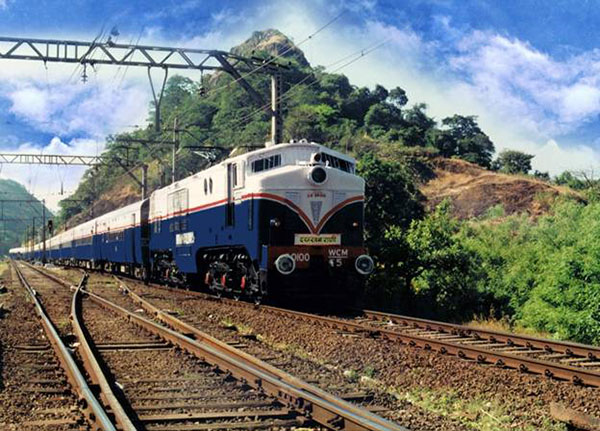 #TravelMail ( #www.travelmail.in ) #TravelNews #TourismNews #DailyNews #BreakingNews
#TravelMail ( #www.travelmail.in ) #TravelNews #TourismNews #DailyNews #BreakingNews
[dropcap]N[/dropcap]ew Delhi: The introduction of ‘’Deccan Queen’’ between the two premier cities of Maharashtra on 1st June 1930 was a major landmark in the history of the Great Indian Peninsula Railway, the forerunner of the Indian Railways. This was the first deluxe train introduced on the railway to serve two important cities of the region and was aptly named after Pune, which is also known as ‘’Queen of Deccan’’ (‘’Dakkhan ki Rani’’).
Initially, the train was introduced with 2 rakes of 7 coaches each one of which was painted in silver with scarlet mouldings and the other with royal blue with gold lines. The under frames of the coaches of the original rakes were built in England while the coach bodies were built in the Matunga Workshop of the GIP Railway.
The Deccan Queen, initially, had only first class and second class accommodation. First class was abolished on 1st January 1949 and second class was redesigned as first class, which continued up to June 1955 when third class was introduced on this train for the first time. This was later re-designated as second class from April 1974 onwards. The coaches of the original rakes were replaced in 1966 by anti-telescopic steel bodied integral coaches built by Integral Coach Factory, Perambur. These coaches incorporated improved design of bogies for better riding comfort and also improvements in the interior furnishings and fittings. The number of coaches in the rake was also increased to 12 from the original 7 coaches providing additional accommodation. Over the year the number of coaches in the train has been increased to the present level of 17 coaches.
From its inception, apart from providing high standards of comfort to the passengers, the train has witnessed various improvement such as introduction, for the first time in India, of coaches with roller bearings, replacement of end on generation coaches with self generating coaches with 110 volts system and introduction of first and second class chair cars providing increased accommodation to passengers. The distinctive colour scheme of cream and oxford blue with red band above the window level has been recently adopted as the colour scheme for this train.
With the ever-growing aspirations of the travelling public for better amenities, improved standards of comfort and better quality of service, it was considered necessary to give a complete facelift to the Deccan Queen.
The rake was changed in 1995 with the following special features:
> All newly manufactured or about a year old, air brake coaches.
> The 5 first class chair car in the old rake have been replaced by 5 ACchair cars providing an additional seating capacity of 65 in a dust-free environment. Also the 9-second class chair cars provide additional seating capacity of 120 seats compared to the old coaches. Thus, new rake provides a total seating capacity of 1417 as against 1232 seats in the old rake i.e. an increase of 15%.
> The dining car offers table service for 32 passengers and has modern pantry facilities such as microwave oven, deep freezer and toaster. The dining car is also tastefully furnished with cushioned chairs and carpet.
The management systems of Deccan Queen (2123 Dn / 2124 Up) have been assessed by International Services Ltd. and found to comply with the requirements of ISO 9001-2000 under the Joint Accreditation System of Australia and New Zealand in November 2003. At Present Deccan Queen (12123/12124) runs with 17 coaches including 4 AC chair car, one Buffet Car, 10 second class chair car and two second class cum brake vans.
GET BREAKING NEWS ON YOUR EMAIL: https://goo.gl/forms/BhU0lfuxcAUBlcWo1

